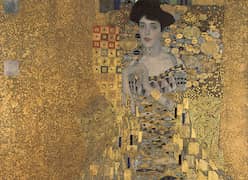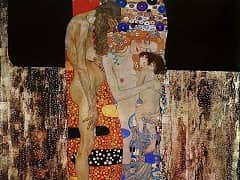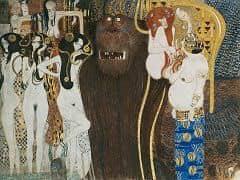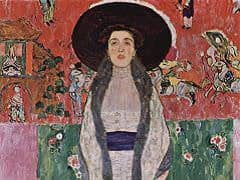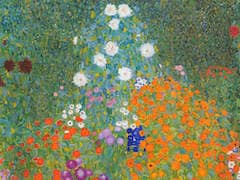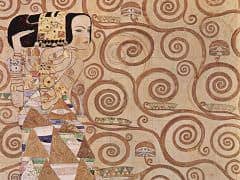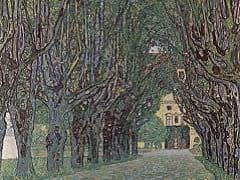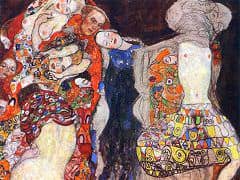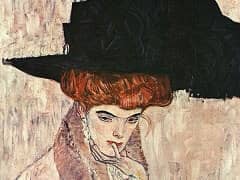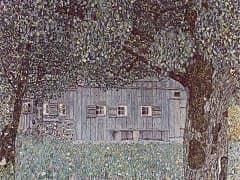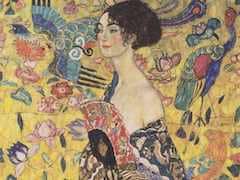The Big Poplar, 1902 by Gustav Klimt

Beginning in 1900 Gustav Klimt spent nearly every summer on Lake Attersee, in the Salzkammergut lake region, to which he was introduced by Emilie Flöge. Klimt was an indefatigable worker even during his holidays, rising early and
retiring to bed early. But despite the fact that he invariably wore his blue painter's smock, photographs often show him in jovial social situations. He enjoyed rowing "to wake up the muscles a bit", as he said, went swimming
"with great caution", and always had his sketchbooks with him when he went for walks. Klimt also became one of the first fashion photographers, taking pictures of Emilie Flöge in ten of the outfits she created.
It was during these summer stays on Attersee that Klimt worked on his landscapes, which account for one quarter of all his paintings. For these works the artist chose simple motifs: gardens, meadows with fruit trees, farmhouses
surrounded by lush vegetation, and details of the lake and its shoreline. Klimt always painted outdoors, but he made use of an unusual technique that sheds light on some of the peculiarities of his landscapes. These pictures are
not panoramas, but rather capture unusual details of the shoreline as viewed from an elevated position or from the water surface. These curious perspectives can be attributed to the so-called "viewfinder" he used, initially a
simple piece of cardboard with a hole cut out of it, and later an ivory plate or an opera glass. Klimt's landscape paintings also betray the influence of the Impressionists such as Claude Monet,
Paul Cezanne, Van Gogh and frequently he achieves a pointillist effect as well. This, however, is not caused by the breaking down of the picture into
bits of colour, but is rather the result of the juxtaposition of the individual objects, represented as blocks of colour, and by the general absence of the illusion of depth. This creates pictures that are free of tension,
conveying a meditative tranquillity in which time seems to be standing still. There is no place for humans here. But animals, with the exception of chickens, are absent as well. In his selection of simple motifs, in which painterly
considerations have priority over the subject, and whose absence of drama invites contemplation, Klimt - despite his adoption of contemporary influences - is firmly rooted in the tradition of Austrian landscape painting.



